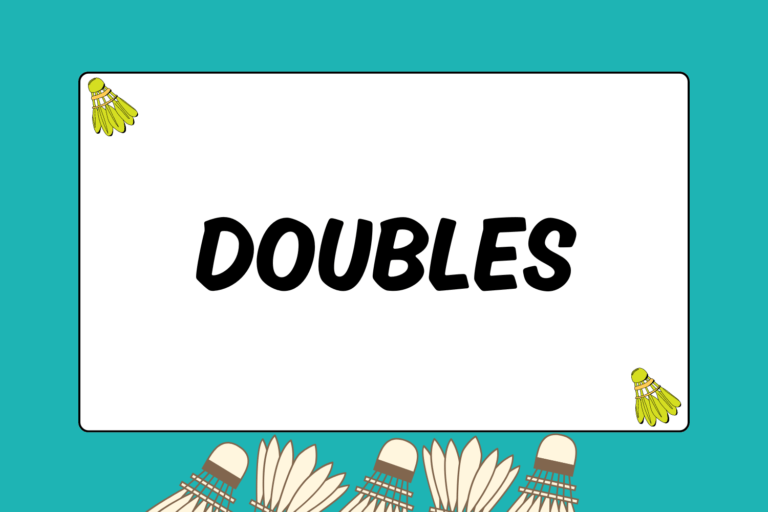As the only coed event in badminton, mixed doubles presents a unique challenge when choosing a partner. As such, the male and female partners are responsible for different roles within the teams.
Your playing style, in addition to your strengths and weaknesses, will largely determine what kind of partner you should play with. While doubles and mixed doubles are played much differently, there are a lot of overlapping skills and techniques.
Read on to learn what styles are compatible and what kinds of obstacles they face.
Aggressive Playing Style
Aggressive players focus on high-risk, high-reward shots such as smashes and net kills. They keep the pressure on their opponents by maintaining an offensive advantage with aggressive shot-making. Despite the high-risk shots taken, these players generally have excellent shot execution simply because it’s required to successfully use this style.
Below are some ups and downs of aggressive play.
Pros:
- High-risk shots lead to shorter rallies, thus requiring less stamina.
- Disruptive style of play that forces opponents to find a way to win.
- Strong against all other styles.
Cons:
- Quick pace of play can lead to muscle fatigue.
- Aggressive style of play makes players more prone to injury.
- Physical exertion can lead to mental exhaustion.
Fortunately, aggressive players thrive in mixed doubles because of its offense-orientated nature. Aggressive players match best with other similarly aggressive players but can work well with balanced players, too. Avoid defensive-minded players because that style can often work against the offensive advantage you worked so hard to get.
Defensive Playing Style
Defensive players are extremely consistent and use safer shots to allow the opponents to mess up. This is a reactive style of play because it waits for the opponent to make a mistake and then capitalizes upon it. Generally, defensive players have solid footwork and quick reactions to deal with any shot the opponent may hit.
The lists below highlight some of the advantages and drawbacks of this style:
Pros:
- Energy-efficient style which uses the opponents’ power against them.
- Benefits from longer rallies and matches.
- Steady, consistent style.
Cons:
- Non-disruptive style that relies on having superior shot execution.
- Requires higher shot quality to avoid giving opponents rally-ending opportunities.
- Safe and somewhat predictable style that leaves little guesswork for the opposition.
It can be risky to play with a defensive player in mixed doubles. The pairing of male and female players favors an offensive-oriented environment, which immediately disadvantages defensive players.
However, defensive players can be grueling to play against because they are extremely energy-efficient. By utilizing the opponent’s power from the shots, defense-minded players can simply redirect a powerful smash from the opponent and incrementally gain an advantage over the course of a match. Adjustments must be made, but a defensive tandem can succeed in mixed doubles.
Balanced Playing Style
A balanced playing style is a compromise between being proactive and reactive. Balanced players will be proactive in the sense that they have the shot-making abilities to go on the offensive whenever they sense an opportunity to do so. They are also reactive in the sense that they can play off the opponent’s shots and still be effective.
As always, there are both advantages and disadvantages:
Pros:
- Adaptable, flexible style that can disrupt an opponent’s game plan.
- Ability to change tempos and surprise opponents.
- Offers the best that defensive and offensive styles have to offer.
Cons:
- Requires both excellent shot execution and decision-making.
- Can work against a player who fails to identify a viable plan of attack.
- More likely to suffer chemistry issues with partner.
- Mentally and physically demanding, which can frustrate any player not up to the task.
Although mixed doubles tend to favor an aggressive playing style, balanced players match up well against a variety of opponents. They can play with any type of player, but they would work best with similar-minded players.
With so many strategies and options available in this style, dissenting opinions tend to create friction between partners. Numerous philosophies and strategies can be successfully applied to any given situation, but ultimately, partners must agree for it to work.
Chemistry
This leads you to the second half of the equation: chemistry. Despite its name, chemistry is not an exact science. It’s a feel. How well you play alongside a potential mixed partner should be weighed just as heavily, if not more, as how your styles mix. Usually, if your styles are similar, it will be easier to mesh, but philosophies and strategies are equally important. Players who have conflicting opinions on how to play badminton would obviously not make a great match.
Chemistry is also heavily influenced by how competitive or laidback you are. If you’re trying your hardest to win a match while your partner is dripping in sweat, then it could be a sign of good things to come.
Not a Partner for Life
Ultimately, don’t put too much pressure on yourself trying to find the perfect partner, because that person does not exist. If you can enjoy playing with your partner while still competing, then you’ve got a solid start. At worst, you’ll have played one tournament together, knowing that the partnership won’t work.
Follow the tips in this guide, and you’re sure to find a partner with a complementary style. But remember, great teamwork cannot always be qualified. Only you can decide who the right mixed partner is for you!





